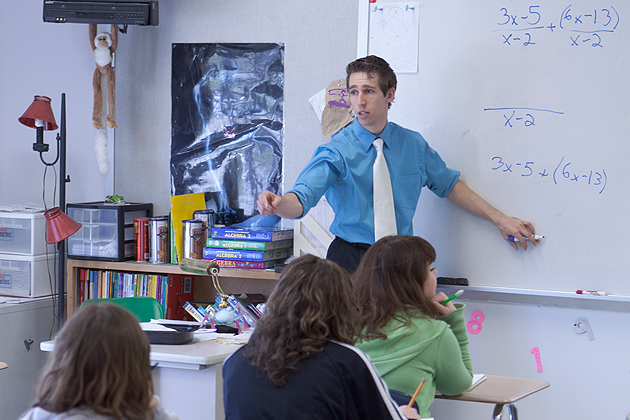
A research study examining the performance of elementary and secondary school teachers in Connecticut indicates that students taught by Neag School of Education alumni score far better on math portions of the Connecticut Mastery Test (CMT) than do students taught by alumni of other universities.
Perhaps more important, though, says Mary Yakimowski, the Neag School’s director of assessment and a lead author of the study, the work she and her team put into developing an evaluation model to measure graduates’ performances can now be adopted by other universities across the country.
“All across the nation, higher education institutions are being told to assess the outcomes of teacher education programs, but nobody has designed a model for incorporating the assessment of student performance,” says Yakimowski, who also is an associate professor-in-residence in the educational psychology department. “This is important because schools are now being told to assess K-12 outcomes.”

The increased calls for accountability are tied to the landmark No Child Left Behind (NCLB) federal legislation in 2001. The latest NCLB reports, released Sept. 19, say that only 53 percent of Connecticut schools made Adequate Yearly Progress in 2011, down from 72 percent in 2010, primarily due to the annually increasing standards of NCLB. Yakimowski says knowing how well alumni from teacher preparation programs are performing in the classroom informs schools of education about whether to keep doing what they’re doing or to alter their methods.
The study looked at overall CMT mathematics scores from grades 3-8, in five urban and suburban districts. Test results from more than 11,200 students were analyzed, and the researchers – Yakimowski, Mary Truxaw, and Wei Xia – looked at the students’ overall mathematics scores, focusing on scores within five domains, a series of objectives called strands, and the students’ proficiency levels. (A domain could include, for instance, questions regarding whole numbers, fractions, and decimals, and whether students revealed “number sense.”)
The information was presented to a conference of the American Educational Research Association and, says Yakimowski, was well received. She says the study has been submitted for consideration to a top education journal. She and her colleagues also have prepared longitudinal research studies to help the Neag School determine how well the graduates from its teacher education program are assisting pupils in reading, and how students with disabilities are performing.

“The overall scores among students taught by our alumni were significantly higher than the pupil performance of other teachers,” Yakimowski says. In fact, 76 percent of the students taught by Neag School alumni either reached the state goal or better, compared to less than 60 percent of students taught by graduates of other universities; and only 8.6 percent of the Neag graduate-taught students were less than proficient, compared to 19.8 percent of students taught by non-Neag alumni.
“Despite many challenges, these types of pupil achievement studies linked to teachers must be conducted to provide feedback to school administrators, teacher preparation programs, and researchers to continue to improve the educational opportunities of our nation’s pupils,” the reading study says.
The research to create an assessment model was funded, in part, from Carnegie Corp. through the Teachers for a New Era (TNE) grant in 2002. UConn was one of only 11 universities in the nation to win the TNE designation.
Of the roughly 35,000 teachers in Connecticut, more than 2,300 are graduates of the Neag School. Another 254 work in related service areas, 484 serve as school administrators, and 21 alumni are school superintendents. About 86 percent of Neag graduates remain and teach in Connecticut schools.



